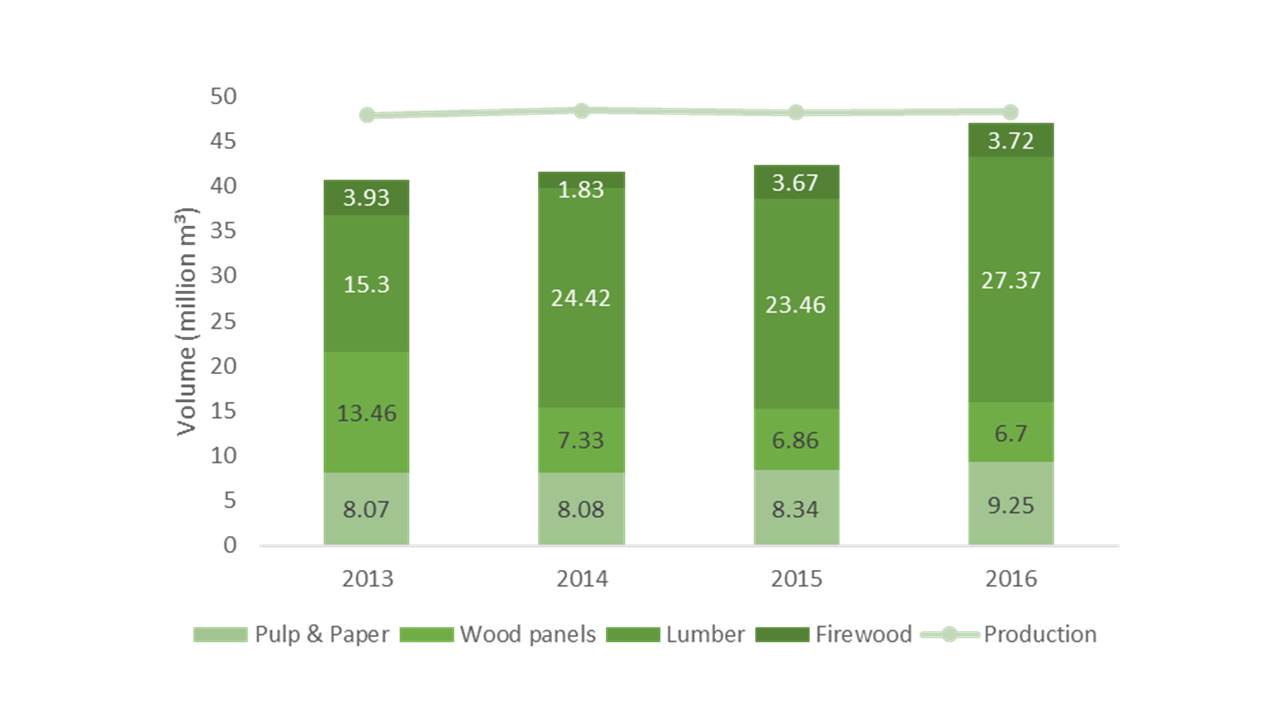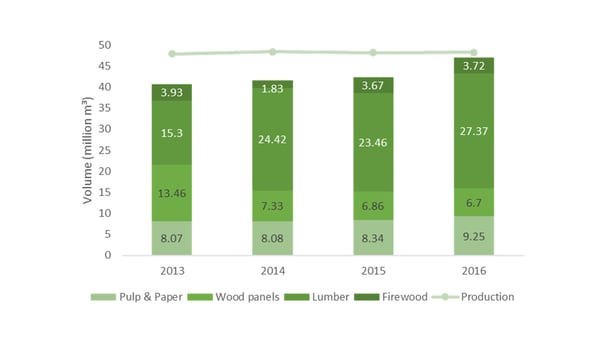
Sustained demand for pine resources in Brazil is a market dynamic worth watching closely. During recent market studies conducted by Forest2Market do Brasil in the southern region of the country, it became increasingly clear that strong demand exceeds the current production of pine logs, which may lead to a supply imbalance in the next few years.
Projections indicate that a deficit is expected in the near term if no major market changes occur; the trend is clearly illustrated in figures from official sources such as The Brazilian Industry of Planted Trees (IBÁ), as shown in Figure 1 below.
Figure 1. Trend of pine log use in Brazil Source: Brazilian Tree Industry (IBÁ)
Source: Brazilian Tree Industry (IBÁ)
The increase in demand in recent years has been driven by both internal and external market factors. Most importantly, Brazil’s modest but palpable economic recovery has infused the market with a renewed sense of optimism. An increase in exports of pine wood products (cellulose, panels, sawn wood) has followed the market recovery in tandem with the appreciation of the dollar and increased demand from export destinations.
Some wood products segments reached even higher levels (in terms of export volume) than those observed before the Great Recession of 2008. Recent announcements of capacity expansions (and greater consumption of raw material) by large and important Brazilian forest industry players in the coming years will apply further pressure the supply of wood.
At the same time, there is a downward trend in the production of pine logs as a result of competition for agricultural land. The southern region of Brazil, especially the states of Paraná and Santa Catarina—major pine-producing regions—do not have vast acreages available for the expansion of planted forest land. This has driven up the price of land in some areas, which makes forest management unfeasible in most situations. The large companies that have expansion plans will have to go further and further away from their current procurement zones in search of raw materials.
The situation calls up the theoretical concept of a "forest blackout," which would occur when demand outstrips supply. However, when facing a severe shortage of wood, the market defaults to regulating itself via price; when demand skyrockets, price follows suit until demand decreases and balance is restored. The increase in the price of pine logs over 18 cm has been noticeable in recent months, which will likely drive continued timber harvests in the near term. While this is a positive development for timberland owners and producers in southern Brazil, it is a cause of concern for manufacturers and harvesting operations that do not have access to their own forest supply.


 Marcelo Schmid
Marcelo Schmid



